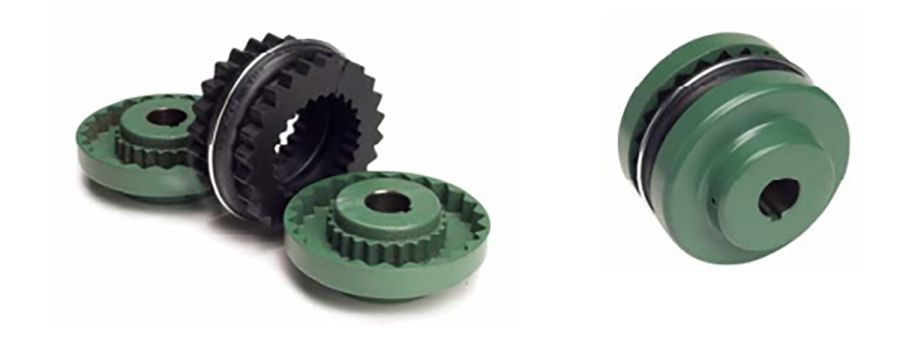
What are the important considerations when selecting a coupling between a pump and motor?
A pumping system typically requires three valves: an inlet (suction) shut-off valve, an outlet (discharge) shut-off valve, and a check valve between the pump discharge nozzle and the discharge shut-off valve to avoid reverse flow and protect the pump from backpressure. Occasionally, a foot valve can be installed on the inlet pipe to maintain pump prime or to protect it from reverse rotation.
.jpg)
However, potential drawbacks to foot valves such as impacts to net positive suction head available (NPSHa) and risk of water hammer (a pressure surge caused by an abrupt change in the pump rate of flow) must be considered.
Rigid couplings, as their name implies, provide a rigid connection between two shafts, meaning that the shafts are connected by tight tolerances that do not allow for any misalignment. This type of coupling must transmit torsional and axial loads and is capable of the highest torque and speed ratings. Rigid couplings are primarily used on vertical pumps where the thrust bearings are located in the motor, and when used in conjunction with the driver lower bearing, rigid couplings provide pump shaft support for mechanical seals.

While there are many variations of flexible couplings, they are all intended to function by connecting two shafts, transmitting rotary power and compensating for some shaft misalignment. The secondary features of these couplings can vary, leading to different benefits paired with each type. Some of these secondary features include cushioning shock loads, vibration damping, maintenance accessibility, electrical insulation or conductivity, limited end float capabilities, fail-safe properties and more. Jaw, wrap, sleeve, tire, grid, gear and disc are all different types of flexible couplings used in pump systems.
Application considerations when selecting a coupling include:
- transmit required torque at given speed(s)
- fit to pump and driver shaft
- providing shaft end separation to permit removal of mechanical seal, permit removal of pump bearings and permit lateral offset of pump and driver shaft
- accommodating misalignment
- providing end float limitation
- maintaining the required degree of unbalance at given speed(s)
- dampening torsional vibrations
- preventing the dispersion of stray eddy currents
- resisting corrosive environments
- preventing the occurrence of sparks
For more information on couplings, refer to “American National Standards Institute/Hydraulic Institute (ANSI/HI) 14.3 Rotodynamic Pumps for Design and Application” at www.pumps.org.

